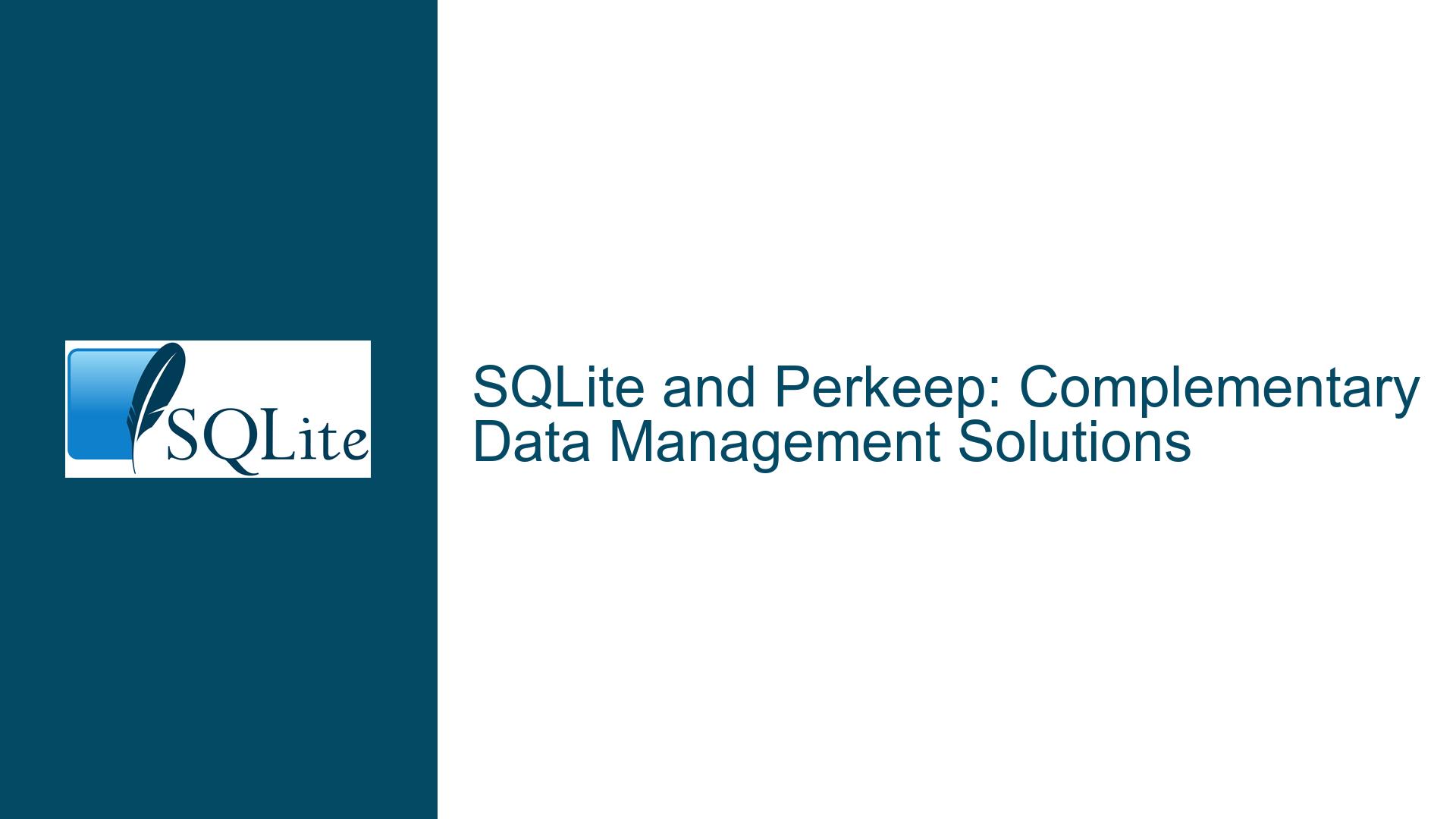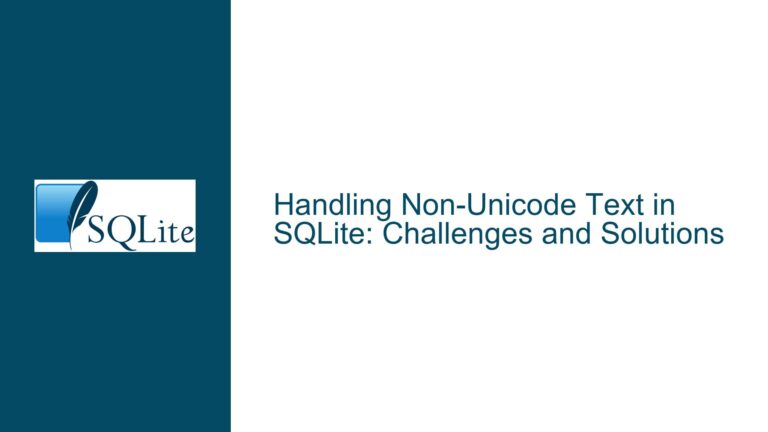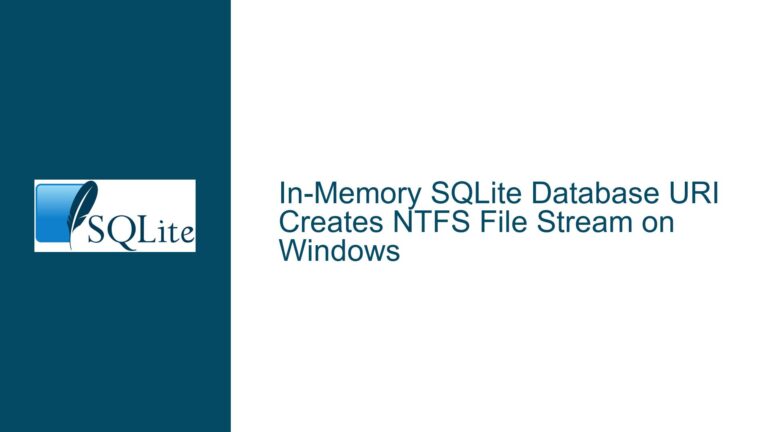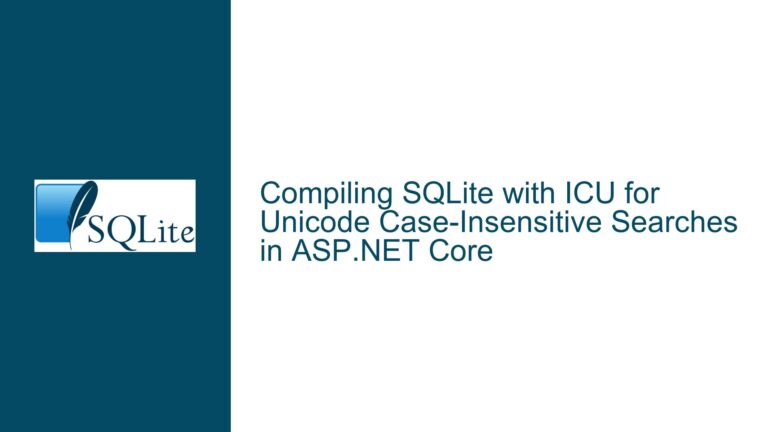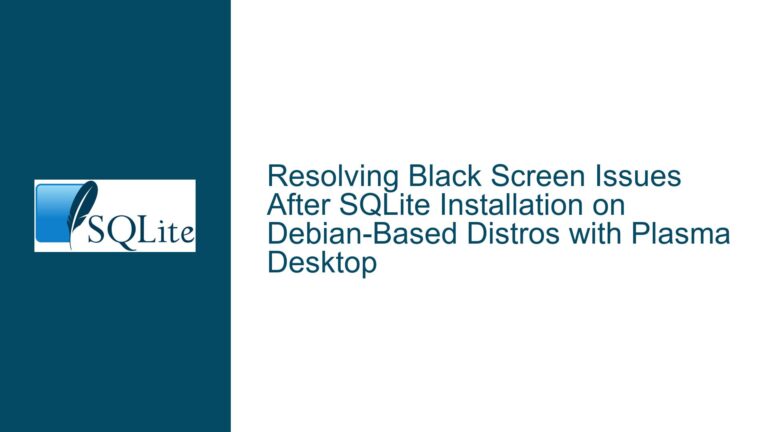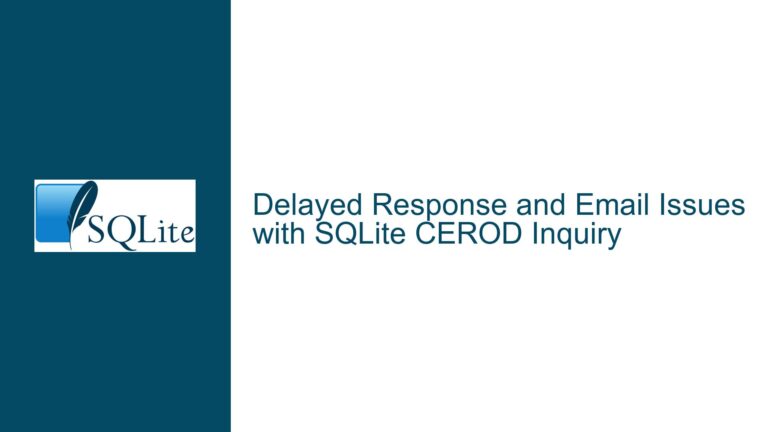SQLite and Perkeep: Complementary Data Management Solutions
SQLite and Perkeep Synergy in Personal Data Warehousing
The integration of SQLite and Perkeep presents a compelling solution for personal data warehousing, addressing both structured and unstructured data management needs. SQLite, renowned for its lightweight, serverless architecture, excels in handling structured data with high efficiency. Perkeep, on the other hand, is designed for personal archiving, particularly adept at managing larger files such as photos and videos. The synergy between these two systems can provide a robust framework for individuals aiming to reclaim and manage their personal data effectively.
SQLite’s strength lies in its ability to handle highly structured data, making it ideal for running arbitrary queries and performing complex data analysis. This capability is crucial for users who need to interact with their data in a flexible and dynamic manner. Perkeep, with its focus on storage and archiving, ensures that larger, less structured data is securely stored and easily retrievable. Together, these systems can offer a comprehensive solution that covers the entire spectrum of personal data management.
The potential for integrating SQLite databases within Perkeep’s archival framework is particularly promising. By storing SQLite database files in Perkeep, users can benefit from Perkeep’s robust storage capabilities while retaining the ability to perform complex queries and analyses using SQLite. This dual approach not only enhances data security and accessibility but also provides a seamless experience for users who need to manage both structured and unstructured data.
Challenges in Integrating SQLite with Perkeep’s Indexing System
One of the primary challenges in integrating SQLite with Perkeep lies in the differences between their indexing systems. Perkeep employs a custom indexing language that is tailored to its specific storage and retrieval needs. This custom language, while effective for Perkeep’s intended use cases, may not be as flexible or comprehensive as SQLite’s querying capabilities. As a result, integrating SQLite’s indexing and querying mechanisms with Perkeep’s storage system requires careful consideration and potential modifications to both systems.
Another significant challenge is the need for importers that can bridge the gap between Perkeep’s schema documents and SQLite’s database structure. Perkeep’s schema documents are designed to accommodate a wide range of data types, including metadata from various file formats such as images and videos. To fully leverage SQLite’s querying capabilities, it is essential to develop importers that can translate Perkeep’s schema documents into a format that SQLite can efficiently process. This translation process must ensure that all relevant metadata and structural information are preserved, enabling seamless querying and analysis within SQLite.
Additionally, the integration must address the handling of non-schema documents within Perkeep. These documents, which include metadata from various file formats, require specialized importers that can extract and convert the metadata into a structured format compatible with SQLite. This process involves not only the technical challenge of developing such importers but also ensuring that the imported data maintains its integrity and usability within SQLite’s framework.
Implementing Importers and Enhancing Query Capabilities
To effectively integrate SQLite with Perkeep, the development of specialized importers is crucial. These importers must be capable of translating Perkeep’s schema documents and non-schema documents into a format that SQLite can process. The importers should be designed to handle a wide range of data types, ensuring that all relevant metadata and structural information are accurately converted and preserved.
One approach to developing these importers is to create a modular system that can be extended to support new data types and formats as needed. This modularity would allow for the continuous enhancement of the integration, ensuring that it remains adaptable to evolving data management needs. Additionally, the importers should be designed with efficiency in mind, minimizing the computational overhead and ensuring that the data conversion process does not become a bottleneck.
Enhancing SQLite’s query capabilities to better align with Perkeep’s indexing system is another critical step in the integration process. This enhancement involves extending SQLite’s query language to support the custom indexing language used by Perkeep. By doing so, users can leverage the full power of SQLite’s querying capabilities while still benefiting from Perkeep’s robust storage and retrieval system.
Furthermore, the integration should include mechanisms for optimizing query performance. This optimization can be achieved through the use of indexing strategies, query caching, and other performance-enhancing techniques. By ensuring that queries are executed efficiently, the integrated system can provide a seamless and responsive experience for users, even when dealing with large volumes of data.
In conclusion, the integration of SQLite and Perkeep offers a powerful solution for personal data warehousing, combining the strengths of both systems to provide a comprehensive data management framework. By addressing the challenges associated with indexing, schema translation, and query optimization, this integration can deliver a robust and flexible solution that meets the diverse needs of personal data management.
